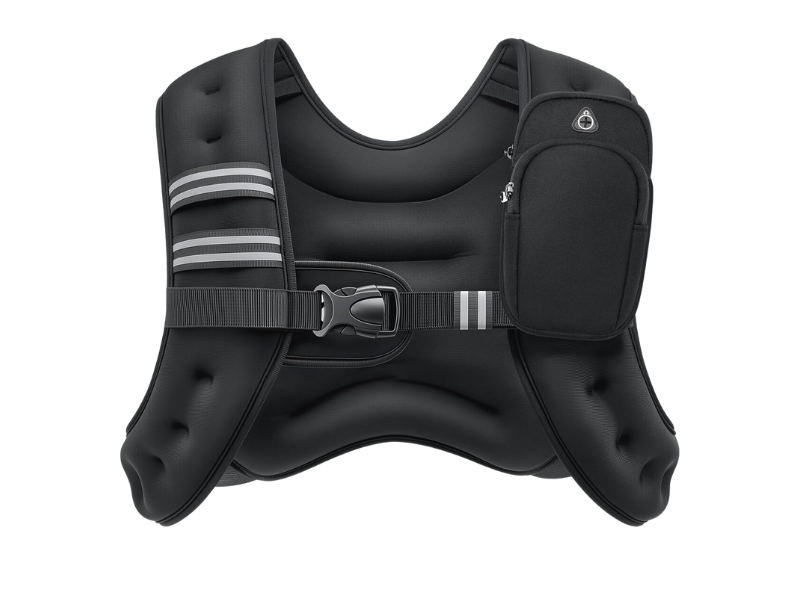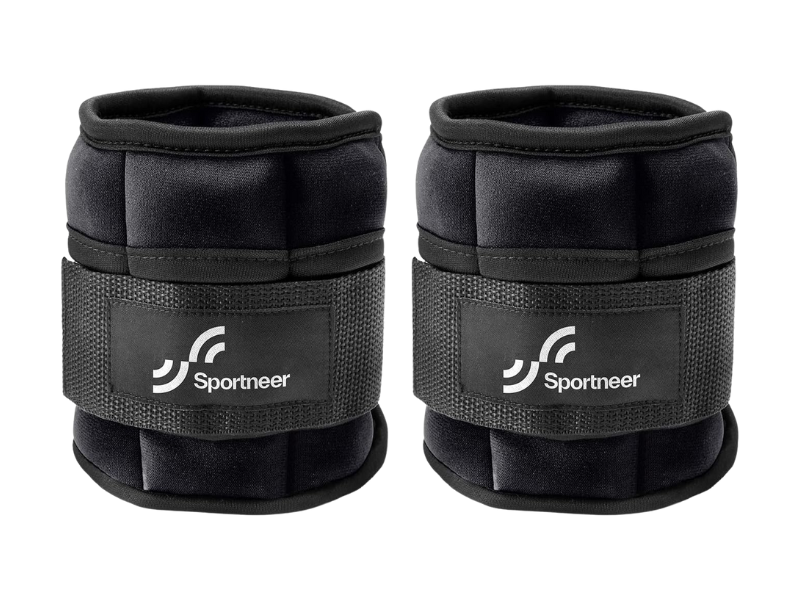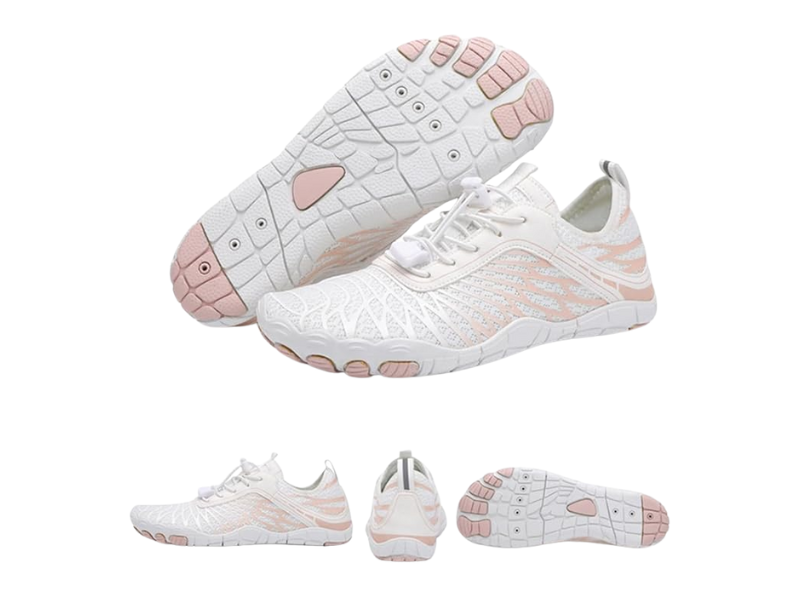When you buy through our links, we may earn a commission. Learn More.
Walking is one of the simplest, most accessible ways to stay active. You don’t need a gym membership, expensive equipment, or hours of free time, just a pair of shoes and a bit of motivation. But while walking may seem basic, new trends and smart gear are proving it can be an incredibly effective workout. By making a few evidence-based adjustments, you can turn a daily walk into a powerful tool for better health and fitness.
What’s Trending in Walking?
Japanese Interval Walking Training (IWT)
Often called the Japanese walking method, this science-backed approach involves alternating between high-intensity and moderate-intensity walking intervals. The standard protocol consists of 3 minutes of brisk walking (about 70% of your maximum effort) followed by 3 minutes of moderate-pace walking, repeated for at least 30 minutes, four times per week.
Research conducted at Shinshu University in Japan has shown that participants following this method experienced significant improvements compared to continuous moderate walking, including:
- Reduces blood pressure and blood sugar levels
- Improves leg strength
- Enhances aerobic fitness and endurance
This approach is particularly effective because the high-intensity intervals stress your cardiovascular system enough to drive meaningful adaptations, while the moderate intervals provide active recovery without complete rest.
The 6-6-6 Walking Challenge
This viral TikTok trend involves walking for 60 minutes at a brisk pace, either at 6 a.m. or 6 p.m., with a 6-minute warm-up and 6-minute cool-down. While the “6-6-6” numbering is more marketing than science, the underlying principle is sound: consistent, structured walking sessions can significantly improve cardiovascular health, mood, and endurance.
The appeal lies in its clear, measurable goals, making it easier to maintain consistency. However, jumping straight into 60-minute daily walks may be too ambitious for beginners. Consider starting with shorter durations and gradually building up to avoid burnout or injury.
According to the Heart and Stroke Foundation of Canada, “walking benefits your heart, and lungs, and improves fitness, muscle tone, strength and balance.”
How to Maximize Your Walks
If you want to elevate your steps into a more effective workout, research-backed strategies can make a significant difference:
Incline Walking
Walking uphill or on a treadmill incline engages more muscle groups and can burn 30-50% more calories than flat-ground walking. It particularly targets your glutes, hamstrings, and calves while remaining low-impact. Start with modest inclines (3-5%) and gradually increase as your fitness improves.

Compact 2-in-1 treadmill for home or office with 7% incline, foldable handlebar, and speeds up to 7.5 mph. Features remote control, app connectivity, LED display, and double shock absorption for joint comfort. Easy to store, supports up to 300 lbs, and requires no installation.
Weighted Vests
Adding resistance through a weighted vest can increase calorie burn and support bone density. Unlike ankle or wrist weights, vests distribute weight evenly and don’t stress individual joints. Research suggests weighted vest training can also improve posture and core strength over time.

Built with durable neoprene fabric and filled with iron sand for even weight distribution, this vest features dual storage pockets, cushioned straps, and adjustable fit for comfort and mobility. Perfect for strength training, cardio, and weight loss.
Ankle Weights: Use with Caution
While ankle weights can add intensity, they should be used sparingly and strategically. Prolonged use during long walks can alter your gait and potentially stress knee and hip joints. Reserve them for short intervals, stationary exercises, or leg lifts rather than extended walking sessions.

Customizable weights with removable sandbags (1–5 lbs each, 2–10 lbs per pair) for all fitness levels. Made with soft neoprene, secure metal D-ring, and adjustable straps for ankles 7.5–12.5″. Perfect for walking, running, and strength training.
Proper Walking Footwear
Appropriate shoes are crucial for injury prevention and comfort, especially when increasing pace, distance, or intensity. Look for shoes specifically designed for walking or light running that provide:
- Adequate heel cushioning for impact absorption
- Arch support appropriate for your foot type
- Breathable materials for comfort during longer sessions
- Proper fit with thumb-width space at the toe

Lightweight, breathable, and flexible shoes designed for a true barefoot feel. Features wide toe box, non-slip sole, and elastic closure for easy wear. Perfect for walking, running, yoga, gym, or outdoor activities. Stylish, comfortable, and available in multiple colours and sizes.
Activity Tracking Technology
Fitness trackers and smartwatches can enhance motivation by providing real-time feedback on steps, pace, heart rate, and calories burned. Research shows that people who track their activity tend to walk more consistently and set progressive goals. Features like guided breathing exercises and achievement badges can further support adherence to your walking routine.
Why Walking Remains the Gold Standard
Unlike many fitness trends that come and go, walking offers unmatched sustainability. It’s low-impact, adaptable to any fitness level, and requires minimal equipment. Extensive research continues to demonstrate that regular walking:
Heart Health
Reduces risk of heart disease, type 2 diabetes, and stroke.
Mental Health
Improves mental health and cognitive function.
Weight Management
Supports healthy weight management.
Bone & Muscle Strength
Strengthens bones and muscles.
Immune System
Enhances immune system function.
Longevity
Increases longevity.
The beauty of walking lies in its scalability, you can start with just 10 minutes and gradually build to longer, more intense sessions as your fitness improves.
The Evidence-Based Takeaway
Walking is far more than “just” getting your steps in. With scientifically-supported methods like Japanese Interval Walking Training or structured challenges like the 6-6-6 routine, plus strategic upgrades like incline walking or weighted vests, you can transform a basic walk into a comprehensive fitness tool.
The key to success isn’t finding the perfect walking trend, it’s finding an approach that you can maintain consistently over time. Whether you prefer the structured intervals of Japanese walking, the simplicity of the 6-6-6 challenge, or your own personalized routine, the most effective walking program is the one you’ll actually stick with.
Start where you are, use what motivates you, and remember that every step counts toward better health and fitness.
~ Read more from The Health Insider ~
- There’s a Reason Your Voice May Not Be As Clear as it Can Be
 From dry winters to loud parties, your voice takes a beating. Learn how to protect your “vocal instrument” with these expert tips and SAC guidelines.
From dry winters to loud parties, your voice takes a beating. Learn how to protect your “vocal instrument” with these expert tips and SAC guidelines. - Leftovers Safety: Store & Reheat Like a Pro
 Learn how to store and reheat holiday leftovers safely. From the “Two-Hour Rule” to freezing tips, keep your Canadian kitchen healthy this season.
Learn how to store and reheat holiday leftovers safely. From the “Two-Hour Rule” to freezing tips, keep your Canadian kitchen healthy this season. - Guilt-Free Indulgence for the Holidays. This is How it’s Done.
 Enjoy every plate this season! Prep your gut with our low-effort tips: boost hydration, sip digestive tea, and avoid the post-feast crash.
Enjoy every plate this season! Prep your gut with our low-effort tips: boost hydration, sip digestive tea, and avoid the post-feast crash. - Health Canada Authorizes TNKase for Treatment of Adult Stroke
 Health Canada officially authorizes TNKase for treating acute ischemic stroke in adults. This pivotal approval introduces a faster, 5-second injection to emergency rooms nationwide.
Health Canada officially authorizes TNKase for treating acute ischemic stroke in adults. This pivotal approval introduces a faster, 5-second injection to emergency rooms nationwide. - Generic Ozempic: Canada to See Significant Price Drops
 Struggling with high medication costs? Generic Ozempic is coming to Canada in 2026. Learn how prices could drop from $400 to around $100.
Struggling with high medication costs? Generic Ozempic is coming to Canada in 2026. Learn how prices could drop from $400 to around $100. - Affordable Dental Care is Here. This is where to find it.
 Don’t let cost stop you! THI breaks down the Canadian Dental Care Plan (CDCP) and shows you where to find discounted, supervised care near you.
Don’t let cost stop you! THI breaks down the Canadian Dental Care Plan (CDCP) and shows you where to find discounted, supervised care near you.
The information provided on TheHealthInsider.ca is for educational purposes only and does not substitute for professional medical advice. TheHealthInsider.ca advises consulting a medical professional or healthcare provider when seeking medical advice, diagnoses, or treatment. To read about our editorial review process click here.
